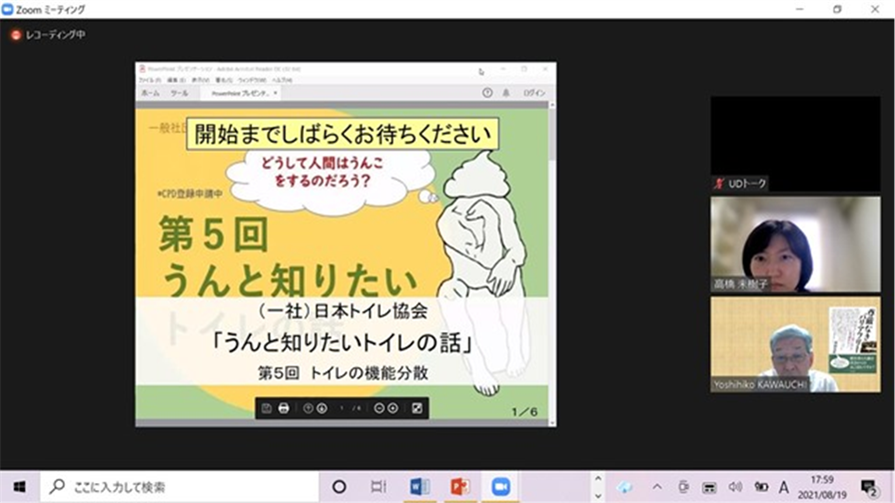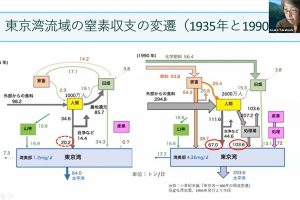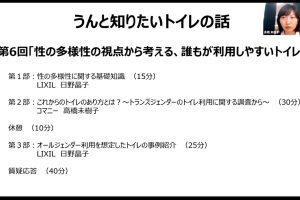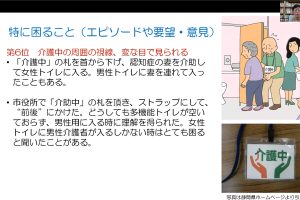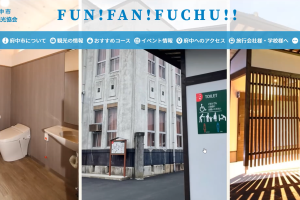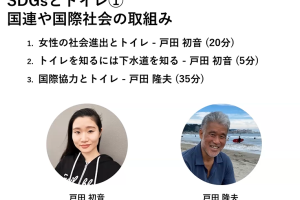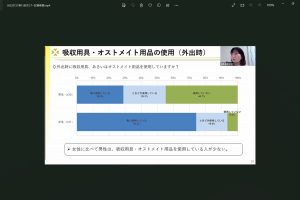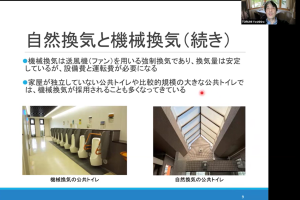Title: The 5th seminar “The Functional Distribution in Toilet”
Date: 19 August 2021 (Thu) 18:00-20:00 JST
Presenter:
Yoshihiko Kawauchi, Ph.D., Deputy Chairperson of Japan Toilet Association (JTA)
【 History of wheelchair-accessible Toilet 】
Wheelchair-accessible toilets were locked during the 1980s and 1990s due to the common problem of inappropriate use. However, there were always problems such as finding the key keeper, the far away to the keeper’s location and it could not use out of the business hours when the store kept it.
There were two opinions on this issue. The keys should be locked tightly and distributed copied it to people with disabilities, but I insisted that anyone should be able to use them anytime.
The Building Accessibility Act came into effect in 1994. This design guideline accessible toilets booth to be used by wheelchair-only and did not cover the Multi-Functional toilet use.
Tokyo Metropolitan Government named it “Toilet for all” based on “The Guidelines for Parks” in 1996 and “The Guidelines for Buildings and Public Transportation” in 2000. This greatly boosted the flow toward Multi-Functional toilets. The Toilet Accessibility Study Group in Japan Toilet Association (JTA) published “Building Accessibility Manual on Toilet edition” (White Paper on Toilet) in 1997, and a word “Multi-Functional Toilet” can be found in this manual.
The Transportation Accessibility Act was enacted in 2000, and the guidelines of it set out “Multi-Functional Toilets.” As for the Multi-Functional, it was required to install the sink unit for ostomate(*) and diaper changing equipment in the wheelchair-accessible restroom. At that time, a pictogram of ostomate was designed. (* ostomate: People with artificial anus or artificial bladder)
Wheelchair-accessible multi-function toilets are normally all gender used because sometimes the assistant may be the other gender. It is true there are also requests from wheelchair users who can use it without assistant and wish to separate the toilets for men and women. Then this guideline proposed a simplified Multi-Functional toilet booth that is slightly larger space than a general toilet booth in the gender-separated toilets. This was also intended to increase the number of accessible toilets for the wheelchair users. However, unfortunately it could not succeed well since the proposal was not mandatory.
The Transportation Accessibility Act enacted in 2000 and then it has become possible to use public transportation with the stroller. At that time, an equipment for taking care of children was also included in the Multi-Functional Toilet. As wheelchair accessible toilets are separated and isolated, all people can use them calmly and peacefully. However since it could to be permitted to use by anyone, various type of people came to use it as a comfortable place and they stayed there longer. As the number of users increased, wheelchair users complained that it should be limited to be used only by wheelchair users as it was at the beginning.
In the past, there were few users and then there were many accessible toilets to be used for a storage eventually. There was also a lot of fraudulent use. It is no point to go back to such the state. The key locking way is still common in overseas, however there is a problem that it is difficult for foreigners to find a toilet to use.
【 The Functional Distribution in Toilet 】
In 2012, the Ministry of Land, Infrastructure, Transport and Tourism announced the survey results on toilets. 74% of wheelchair users gave up waiting in a Multi-Functional toilet. 94% had experiences to wait in a Multi-Functional toilet among 105 wheelchair users. 83% of parents with children and 71% did not look like people with disabilities used the toilet. 75% of respondents felt that they would require more Multi-Functional toilets.
The survey results tells too many functions installed in one Multi-Functional toilet was not successful. The revised edition of the Architectural Design Standard in 2017 is in the guideline of The Building Accessibility Act. It gave up Multi-Functional and providing separate booths for ostomate as well as parents with infants in the separate toilets of men and women. Another method is to install all gender toilet booth. Some people do not use wheelchairs but need assistance when excreting. In many cases, the assistant may be the different gender. In this case, the proposed all gender toilet booth is designed to be used by two people.
It is also acknowledged a simplified accessible toilet in a small building. There were the intention to increase the number of toilets for the wheelchairs in the former simplified Multi-Functional toilet. This one is treated as a complementary way when a fully accessible toilet cannot be equipped. However wheelchair users who require to use the separate toilets for men and women are not covered here.
【The Awareness by Dr. Kawauchi on ” The Functional Distribution in Toilet”】
Functional distribution means the idea of using the toilet booth for just one purpose. The conventional Multi-Functionality is the idea that various people mix and use. There are many sexual minorities and ostomate who do not want to be known it by others. When it is said “Please anyone use it”, it was mixed with various people and used inconspicuously. If the user of the toilet booth is specified such as for all gender or ostomate, it can be identical when someone entering it, and some people will hesitate to use it eventually.
When the turn of the ostomate person on the queue at the toilet, the ostomate booth will not be always available, then there will be hesitation to let the next person go ahead and wait for the ostomate one. There is an example in the toilet in a large retail store, it is mentioned that there are diaper changing tables in both men and women toilet, however most of the people pushing the stroller neglected this sign and they were lined up in the multi-function toilet. I think the expression “Functional Distribution” must be too complicated.
Besides those who use the multi-function toilet as a purely place for excretion, there are “The other category people” who use it as a free private room where they spend their time by hiding from the public affairs. For example, the many toilets in the business district are used for smoking. Some people are refreshing because there can be found an empty coffee can. The ladies use it for makeup. When there is a rattling noise, someone will refill the luggage. Some overseas people bring and spread their big luggage and organize the contents in the accessible toilet booth where they can use widely. The high school students use the toilet to change their uniforms, someone is eating inside, drinking beer or even living in. These are commonly old and new problems indeed.
It is important that these “the other category people” require the free private rooms where they spend their time by hiding from the public affairs. I don’t believe that such unauthorized use can be eliminated by means of the Functional Distribution in Toilet. Moreover, there exist quite a number of “the other category people.” If the number of users of wheelchair-accessible toilet decreases due to the introduction of the Functional Distribution toilet, they will be ironically able to relax more than before.
【Problems with the number of the toilet】
The Building Accessibility Act requires at least one wheelchair-accessible toilet is obligatory for areas of 2,000 square meters or more building without the size of the building. I think the serious problem exists the lack of the number of the toilet. The Ministry of Land, Infrastructure, Transport and Tourism does not mention about increasing the number at all and emphasizes only the functional distribution.
Japanese toilets are highly praised in the world reputation, however I wonder it should be recognized that there exists a problem that the toilet in the skyscrapers wheelchair users have to move many floors by elevator to reach the accessible toilet. This is a serious problem now.
【Message for “the other category people”】
There are many people who can use the toilet for their own time and a free private space. I think nowadays the role of the toilet is very valuable in a sense that it is a space to be alone. Until now some building owners and architects may have less acknowledged these needs. The problematic part may eventually go around to elsewhere such as wheelchair-accessible toilet. This problem cannot be solved by function distribution toilets, but by providing a places to take rests other than the toilet in the building.
【Q&A】
Q1: Does it mean that Japan is the most advanced country with the inclusive public toilets?
A1: Surely Japan is one of the advanced countries on the toilet. Beds for adults and equipment for ostomate cannot be found in overseas countries. The Japanese people are relatively less hesitation to talk about the toilet in public. Therefore, there exists an association such as “Japan Toilet Association” and such association is quite rare in the world.
Q2: How much the percentage of wheelchair users who do not want other people to use wheelchair-accessible restrooms? I’m hemiplegic and I can only use sitting style. I’m in trouble because there are still many crouching style in the stations.
A2: I don’t know the exact number. However most wheelchair users must have had trouble with the toilet. In previous questionnaire many answered that the crouching style was fine. However, recently there are a large number of people say sitting style is better. Now is the turning point time to change to sitting style.
Q3: It is difficult to change behaviors of people using multi-functional toilet by guiding with pictogram. We planned people with or without disabilities may use the toilet with waiting for 2 minutes at the longest.
For this plan, we have increased the number of Multi-Functional toilets. Although it depends on the business type, our survey shows that the number of wheelchair users is actually not so much. The ratio of wheelchair users against non-disabled users is 1: 9. There are many scenes where other people give it away when a wheelchair user comes.
Comparing to the case of just one toilet, the queue of toilets is less than 25% when there are two, and less than 10% when there are three. When the functions are dispersed, the number of toilets in the common toilet will decrease as a result, and non-disabled people must be frustrated. It must be necessary to discuss more about the toilet numbers.
A3: (note)Q3 is about the toilets on the motorway Rest Area including Service Area (SA) or Parking Area (PA), but there are some differences in the environment, functions, and user requirements from the toilets in common buildings in Japan.
Q4: It’s serious issue when functional distribution is required even for the small commercial facilities.
A4: This standard does not mean that in the case of small commercial facilities, functional distribution must be definitely equipped.
A4-2: In the Ministry of Land, Infrastructure, Transport and Tourism’s toilet usage survey, some respondents said that they would eat, drink, fall asleep, and breastfeed in the toilet. Breastfeeding requires normally a specialized baby room. During the lunch break, the men’s restrooms in the university are tend to be occupied for a long time. Maybe it’s because taking a nap there or having some time off. It’s important to consider and solve such issues by creating an alternative space to take a break besides the toilet.
Q5: Toilet must be non-profitable. Therefore, keeping up a large space for toilet is a difficult problem in businesses. As a manufacturer, I thought it was highly likely that it incorporates with multiple functions into the smallest space area.
A5: The idea that toilets do not contribute to the profit is not correct. Japanese companies should be aware that improving the toilet and attached resting area will also create productivity.
Cf: The question is about the toilets on the motorway Rest Area including Service Area (SA) or Parking Area (PA), but there are some differences in the environment, functions, and user requirements from the toilets in common buildings in Japan.
Q6: What is the reason why Centrair-style toilets rarely can be pervasive in Japan?
A6: Centrair is another name of Chubu International Airport. At Centrair toilet there are enough space for the manual wheelchairs and strollers in all toilet booths. It is a very useful and helpful features in Japanese airport toilets because the passengers can use the booth carrying with a big trunk in the airport.
It is true there is always a pressure to reduce the toilet space at the designing time of the building. It is the time to reconsider the idea that toilets will contribute to increase productivity.
